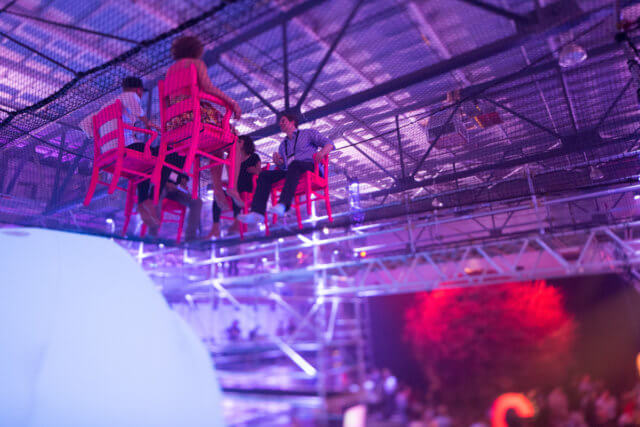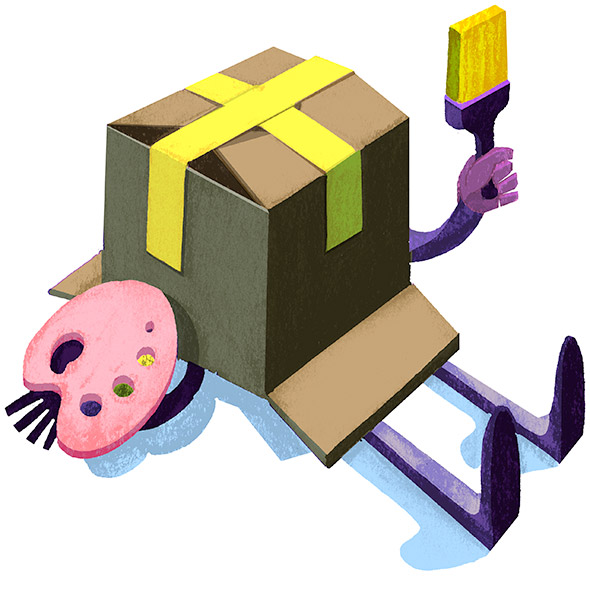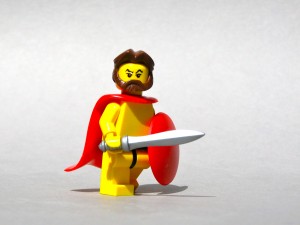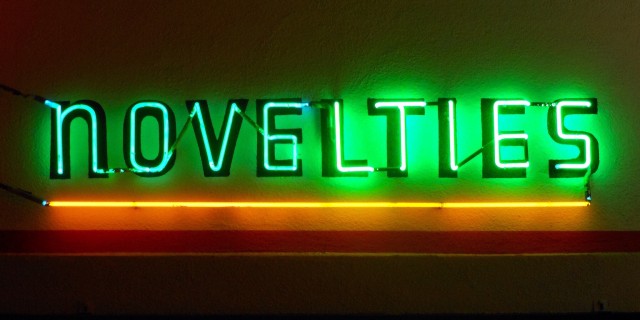Many “experiential” events are just razzle-dazzle

“Experiential” has become a buzzword to use to describe hip events. Instead of listening to speakers, you’re going to have — wait for it — experiences! Sounds so much better, doesn’t it?
The problem is that most events touted as experiential simply add irrelevant novelty to a familiar event process.
For example, the much-hyped C2 Montréal.
C2 attendees have:
- Sat back to back wearing virtual reality goggles, conversing with one another’s avatar (2015);
- Shared an umbrella under fake snow with a stranger (2016); and
- Been given the opportunity to talk to four other people while sitting in chairs suspended from the ceiling (2017).
These “experiences” are simply gussied-up conversations held in novel visual and sensory environments. What is the value, other than novelty, created by adding virtual reality to a conversation between two people in the same room? By conversing in a fake outdoors setting rather than taking a walk outside? By talking to people from a chair hanging from the ceiling?
Conversation is a human practice so old we have no idea when it began. C2, and many other “hot” events, add expensive technological glitz to a conversation, slapping a skin of irrelevant novelty onto a core human activity. Rebrand the result as “experiential”, and voilà — you have a hip FOMO event.
All this is a slightly more sophisticated version of what, unfortunately, passes for creative event design these days. Adding an entertaining overlay to what happens routinely at an event and calling it “experiential” is ultimately no different from defining “creative” event design as novel decor, venues, production, or food and beverage.
What to do instead
Every event provides experiences, so all events are experiential! So let’s decouple the term “experiential” from what are actually “glitzy” events. The right question stakeholders need to ask is how well the experiences events provide fulfill attendees’ actual wants and needs.
For example, every event provides opportunities for conversations. So how can we design an event to create the best possible conversations?
You don’t get better face-to-face conversations in virtual reality or by suspending participants from the ceiling.
Instead, focus on finding and offering the best questions and topics for conversation. This includes providing group and session processes that support participants in uncovering and choosing conversations that will be most useful and meaningful to them.
Also, concentrate on providing supportive environments for ad-hoc conversation. So quieten or eliminate background music during meals and socials, supply a variety of quiet places close to session locales for participants to meet, avoid large rounds and assigned seating at meals, incorporate plenty of white space, etc.
Ironically, such meeting design tweaks cost little or nothing, unlike the flashy C2 examples. So you can provide a significantly better experience for attendees for less cost by applying simple effective meeting design principles. (Unsubtle hint: Working with someone who knows how to design and facilitate relevant attendee experience could be the most cost-effective improvement you could make.)
There’s nothing wrong with novelty. But instead of putting tons of time, effort, and money into dressing-up meetings with novel razzle-dazzle, concentrate your efforts on functional meeting design that provides genuinely useful and meaningful experiences to participants.

 We are biased against creativity. Though most people say they admire creativity, research indicates we actually prefer inside-the-box thinking.
We are biased against creativity. Though most people say they admire creativity, research indicates we actually prefer inside-the-box thinking.
